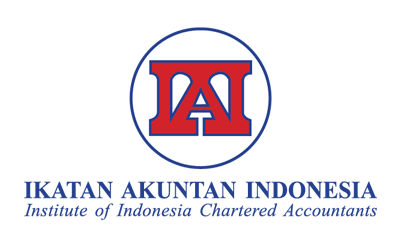Implementasi Quadruple Helix Dalam Mendorong Pertumbuhan Ekonomi Kreatif
Abstract
Keywords
Full Text:
PDFReferences
Afonso, O., S. Monteiro., M. Thomson. (2012). A Growth Model for the Quadruple Helix
Innovation Theory, Journal of Business Economics and Management. Vol. 13, Issue 4, page 1-31
Basiya. R Dan Rozak. H. A. (2012). Kualitas Daya tarik Wisata, Kepuasan Dan Niat Kunjungan Kembali Wisatawan Mancanegara Di Jawa Tengah. Universitas Stikubank. Semarang
Betti Alisjahbana. Jurnal kreativitas dan inovasi. (bettialijahbana.blogspot.com)
Carayannis, EG and Campbell D.F.J. (2006). Knowledge Creation, Diffusion and Use in Innovation Network and Knowledge Cluster: A Comparative System Approach Across the United State, Europe and Asia, Preager.
Carey, M.A. (1994). The group effect in focus groups: planning, implementing, and interpreting focus group research. In Critical Issues in Qualitative Research Methods (Morse J.M., ed.). Sage: Thousand Oaks, 225-241.
Chawla, K. Sudhir. at.al. (2010). Are Small Business Critical Success Factor Same in Different Countries, SIES Journal of Management, Vol.71: 1-12
Daryanto S.S. (1997). Kamus Bahasa Indonesia Lengkap. Surabaya: Apollo
Esti, R dan Suryani, D. (2008). Potret Industri Kreatif Indonesia, Economic Review, Nomor 212, Jakarta
Etzkowitz, H. (2008). The Triple Helix: University-Industry-Government Innovation in Action. Routledge, London.
Fitriana, Aisyah Nurul, Noor, Irwan., & Hayat, Ainul. (2014). Pengembangan Industri Kreatif Di Kota Batu (Studi Tentang Industri Kreatif Sektor Kerajinan Di Kota Batu). Jurnal Administrasi Publik (JAP). Vol. 2 No. 2, Hal. 281-286
Helmsing. A. H. J. (2001). Local Economic Development New Generations of Actors, Policies and Instrument. A summary report prepared for the UNCDF symposium of Decentralization Local Governance in Africa. Capetown.
Hidayati, E..( 2011). Kreativitas dan Inovasi Berpengaruh Pada Kewirausahaan Kecil. Jurnal Manajemen dan Kewirausahaan, Vol.13, No.1, pp. 8-16
Howard, E., Hubelbank, J. & Moore, P. (1999). Employer evaluation of graduates: use of the focus group. Nurse Educator, 14 (5), 38-41
Howkins, John .(2013). Creative Economy: How People Make Money From Idea. England: Penguin Books
Lehoux, P., Poland, B., & Daudelin, G. (2006). Focus group research and “the patient’s view.†Social Science & Medicine, 63, 2091-2104.
Nana Syaodih Sukmadinata. (2009). Metode Penelitian Pendidikan. Bandung: Rosdakarya
Nirwandar, Sapta. (2011). Pembangunan Sektor Pariwisata di Era Otonomi Daerah. Retrieve on. Kementian Pariwisata
Pamudji, S. (1985) Kerja Sama Antar Daerah Dalam Rangka Pembinaan Wilayah Suatu Tinjauan Dari Administrasi Negara, Jakarta: Institut Ilmu Pemerintahan
Pendit, Nyoman S. (2003) Ilmu Pariwisata: Sebuah Pengantar Perdana. Jakarta: Pradnya Paramita.
Prasetyo, Bambang, Lina Miftahul Jannah. (2008). Metode Penelitian Kuantitatif: Teori dan Aplikasi. Jakarta: PT Raja Grafindo Persada.
Queensland Government, State Development and Innovation. (2003). Creativity is big business, framework for the future. Queensland Government, Australia.
Rahayu, Sri (2014) The Quadruple Helix Model Untuk Sistem Inovasi Lokal Dalam Penanggulanan Kemiskinan: Studi Kasus Proyek Inovasi Eksplorasi Sumber Air Sungai Bawah Tanah Masyarakat Desa Karangrejek, Kabupaten Gunungkidul Sammeng
Andi Mappi. (2001). Cakrawala Pariwisata. Jakarta: Balai Pustaka.
Siregar, S. (2010). Statistika Deskriptif untuk Penelitian, PT. Raja Grafindo Persada, Jakarta
Sugiyono. (2006.) Metode Penelitian Kuantitatif Kualitatif dan R&D. Bandung: Alfabeta.
Twinn, S. (1998). An analysis of the effectiveness of focus groups as a method of qualitative data collection with Chinese populations in nursing research. Journal of Advanced Nursing, 28, 3, 654-661
Undang – Undang Nomor 10 Tahun 2009. Undang-Undang Republik Indonesia No 10 Tahun 2009 Tentang Kepariwisataan, diakses pada tanggal 20 Februari 2016 dari http://www.peraturan.go.id/ uu/nomor-10- tahun-2009.html
Undang-Undang Nomor 20 Tahun 2008. Undang-Undang Republik Indonesia Nomor 20 Tahun 2008 Tentang Usaha Mikro, Kecil, dan Menengah, UMKM. diakses pada tanggal 20 Februari 2016 dari http://www.peraturan.go.id/ uu/nomor-20- tahun-2008.html
Wahab, Salah. (2003). Manajemen Kepariwisataan. Jakarta:Pradnya Paramita
Woo Park H. (2014). Transition from the Triple Helix to N-Tuple Helices? An interview with
Elias G. Carayannis and David F. J. Campbell, Scientometrics (2014) 99:203–207, DOI 10.1007/s11192-013-1124-3.
Xiaobo, W. and V. Sivalogathasan. (2013). Intellectual Capital for Innovation Capability : A Conceptual Model for Innovation, International Journal of trade and Finance. Vol.4, No. 3, p.139-144.
Yawson R. M. (2009), The Ecological System of Innovation: A New Architectural
Framework for a Functional Evidence-Based Platform for Science and Innovation Policy, The Future of Innovation Proceedings of the XXIV ISPIM 2009 Conference, Vienna, Austria, June 21–24, 2009
Yoeti, Oka A. (1985). Pemasaran Pariwisata. Bandung: Angkasa
Yoeti, Oka, A. (2008) Perencanaaan dan Pengembangan Pariwisata. Jakarta, Pradaya Pratama
Zaenuri, Muchamad. (2012). Perencanaan Strategis Kepariwisataan Daerah: Konsep dan Aplikasi. Jogjakarta: e-Gov Publishing.
DOI: https://doi.org/10.35591/wahana.v23i2.238
Wahana: Jurnal Ekonomi, Manajemen dan Akuntansi
ISSN : 2685-1415 (Online) | 1410-8224 (Print)
Published by Pusat Penelitian dan Pengabdian Masyarakat Politeknik YKPN Yogyakarta.
Jl. Gagak Rimang No. 2-4 Balapan, Yogyakarta 55222
Phone (0274) 560159, 562317, 513413, 563516 Fax. (0274) 561591
 This work is licensed under a Creative Commons Attribution-ShareAlike 4.0 International License.
This work is licensed under a Creative Commons Attribution-ShareAlike 4.0 International License.













